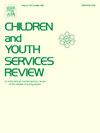残疾儿童:落在后面还是被遗忘?博茨瓦纳使用多维贫困衡量标准的经验证据
IF 2.4
2区 社会学
Q1 FAMILY STUDIES
引用次数: 0
摘要
2030 年可持续发展议程》认识到多维贫困和残疾问题的重要性。尽管有令人信服的证据表明,残疾人陷入贫困的概率更高,但将残疾儿童与非残疾儿童进行比较的研究仍然很少,而且仅限于发达国家。我们利用 2015/16 年博茨瓦纳多主题家庭调查,研究了博茨瓦纳儿童残疾与多维度儿童贫困之间的联系。本研究采用了基于能力和人权的方法的概念框架。结果显示,在人口、经济和地理变量方面,残疾儿童和非残疾儿童之间的贫困水平存在显著差异,残疾儿童的贫困水平高于其他儿童。我们得出的结论是,博茨瓦纳的残疾儿童被遗漏了,因此我们认为,为了避免残疾儿童被遗漏,应有意识地实施现有的包容性政策并制定新的政策,确保残疾儿童享有平等的机会。本文为博茨瓦纳的儿童残疾和多维儿童贫困研究提供了政策启示。本文章由计算机程序翻译,如有差异,请以英文原文为准。
Children with disabilities: Left behind or forgotten? Empirical evidence from Botswana using multidimensional poverty measures
The 2030 Agenda for Sustainable Development recognises the importance of multidimensional poverty and disability. Although there is compelling evidence suggesting that people with disabilities have a higher probability of being poor, studies that compare children with disabilities with those without disabilities remain scarce and limited to developed countries. Using the 2015/16 Botswana multi-topic household survey, we examined the link between childhood disability and multidimensional child poverty in Botswana. The study employs the conceptual framing of the capability and human rights-based approaches. Results reveal significant disparities in poverty levels between children with and those without disabilities across demographic, economic and geographical variables, with children with disabilities experiencing higher poverty levels than the rest of the children population. We conclude that children with disabilities in Botswana are left out and argue that deliberate efforts should be put in place to implement existing and develop new inclusive policies that ensure equal opportunities for children with disabilities in order not to be left behind. The paper provides policy implications for childhood disability and multidimensional child poverty research in Botswana.
求助全文
通过发布文献求助,成功后即可免费获取论文全文。
去求助
来源期刊

Children and Youth Services Review
Multiple-
CiteScore
6.30
自引率
6.10%
发文量
303
期刊介绍:
Children and Youth Services Review is an interdisciplinary forum for critical scholarship regarding service programs for children and youth. The journal will publish full-length articles, current research and policy notes, and book reviews.
 求助内容:
求助内容: 应助结果提醒方式:
应助结果提醒方式:


